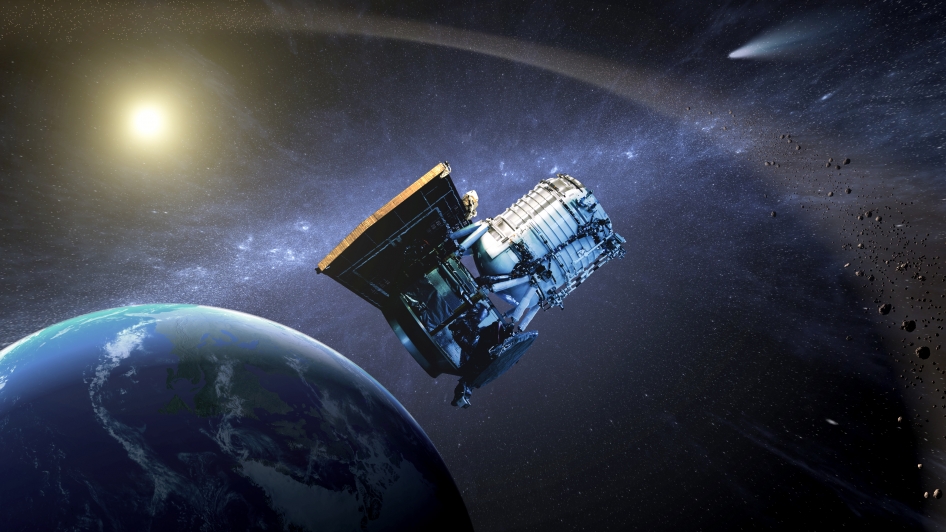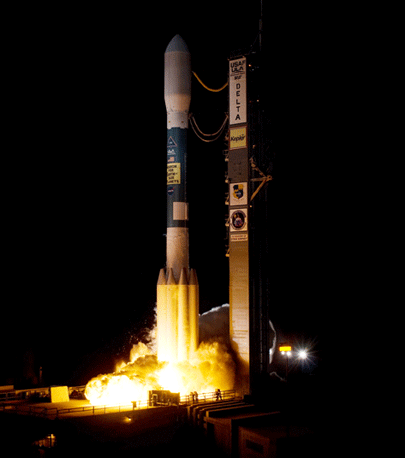
NASA announced that the Wide-field Infrared Survey Explorer (WISE) spacecraft, which had been deactivated in 2011, is slated to make a comeback in September. Engineers will attempt to bring the spacecraft out of hibernation to embark on a new three-year mission: to discover near-Earth objects (NEOs), comets, and asteroids in a mission called NEOWISE.
This reactivation is part of NASA’s push to investigate possible asteroid-redirect and manned asteroid missions. In early August, NASA announced it had completed its first internal review of asteroid redirect concepts, after issuing a request for information (RFI) as part of a “Grand Challenge” in June.

NASA’s FY 2014 budget contains a provision to investigate methods that can capture an asteroid robotically, place it in Earth’s orbit, and send astronauts to explore its surface. The Space Launch System (SLS), along with the Orion spacecraft, is being developed to helm these types of missions. WISE can help because of its unique systems, which are crucial for discovering asteroids and NEOs. Because asteroids reflect but do not emit light, they are difficult to classify with conventional optical telescopes. WISE’s infrared scanner allows these objects to be picked up easily.
Launched in 2009, WISE made approximately 7,500 images daily during its primary mission from 2010 to 2011. During 2010, it discovered about 158,000 rocky bodies in a field of 600,000 known objects. In addition, it discovered 21 comets, over 34,000 between Mars and Jupiter, and 135 NEOs. During its time, it made the most accurate survey of near-Earth objects in the sky.
David Agle, public affairs officer at Jet Propulsion Laboratory (JPL) who specializes in inner Solar System matters, underscored the reason for reactivation and WISE’s new goal:
“The goal is to discover and characterize near-Earth objects, space rocks that can be found orbiting within 28 million miles [45 million kilometers] from Earth’s path around the Sun. NASA anticipates WISE will use its 16-inch [40-centimeter] telescope and infrared cameras to discover about 150 previously unknown NEOs and characterize the size, albedo, and thermal properties of about 2,000 others.”
Agle added, “It gives us a better understanding of the asteroids and comets we study directly, but it will help us refine our concepts and mission operation plans for future, space-based near-Earth object cataloging missions.”
NASA continues to pursue its thirst for a mission that will take its spacecraft out of low-Earth orbit. The SLS is scheduled to perform its first test flight in 2017, with manned missions tentatively planned to begin in 2021. If this happens as scheduled, nearly 49 years will have elapsed since the last time humans stepped on an otherworldly body. (In December 1972, Apollo 17 astronauts Gene Cernan and Harrison Schmitt became the last men to blast off from the Moon’s surface.)
Only time will tell if these timelines change, but WISE, similar to the Lunar Orbiter missions in the 1960s that mapped the Moon, is here to help.
Want to keep up-to-date with all things space? Be sure to “Like” AmericaSpace on Facebook and follow us on Twitter: @AmericaSpace



